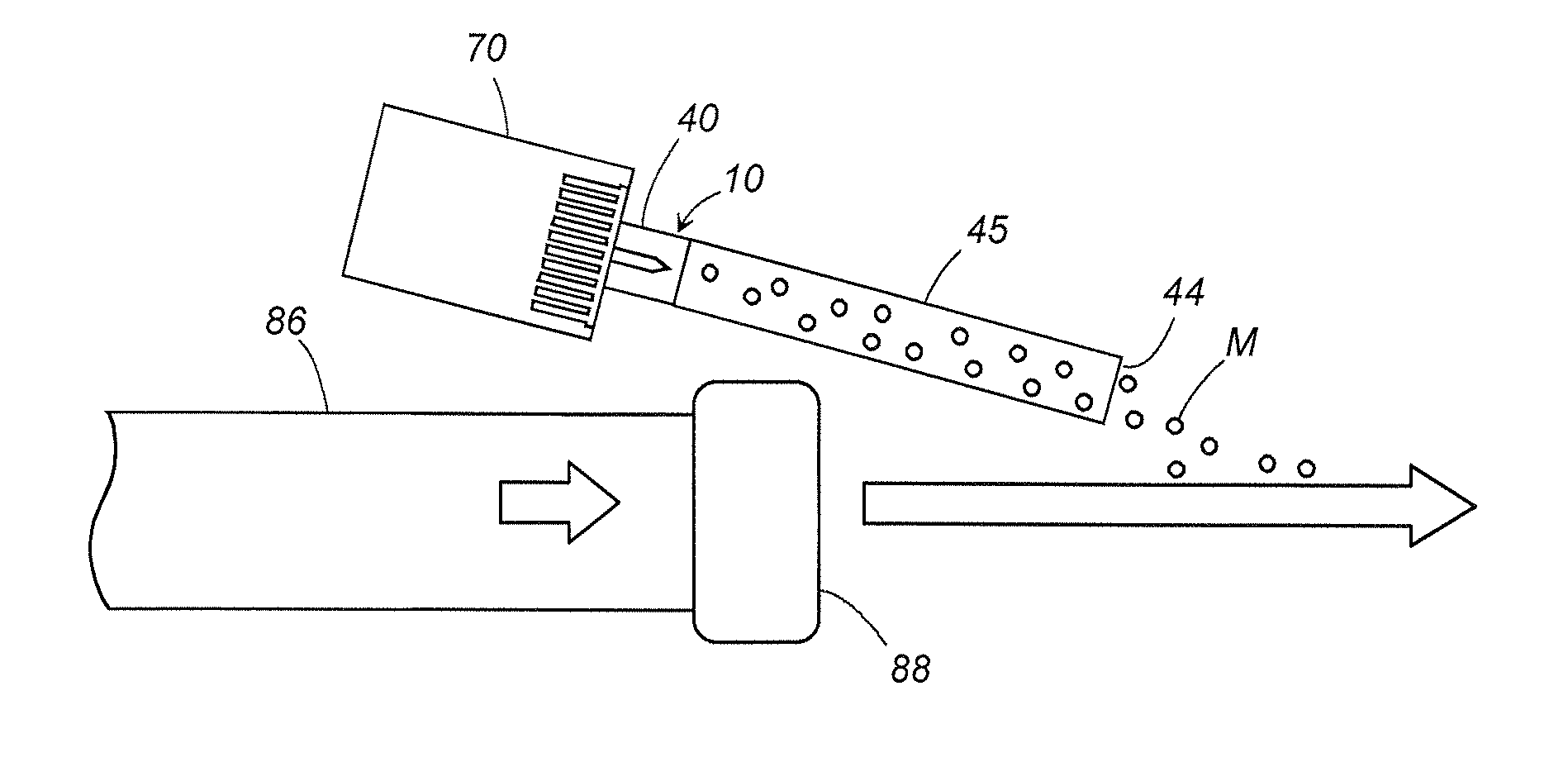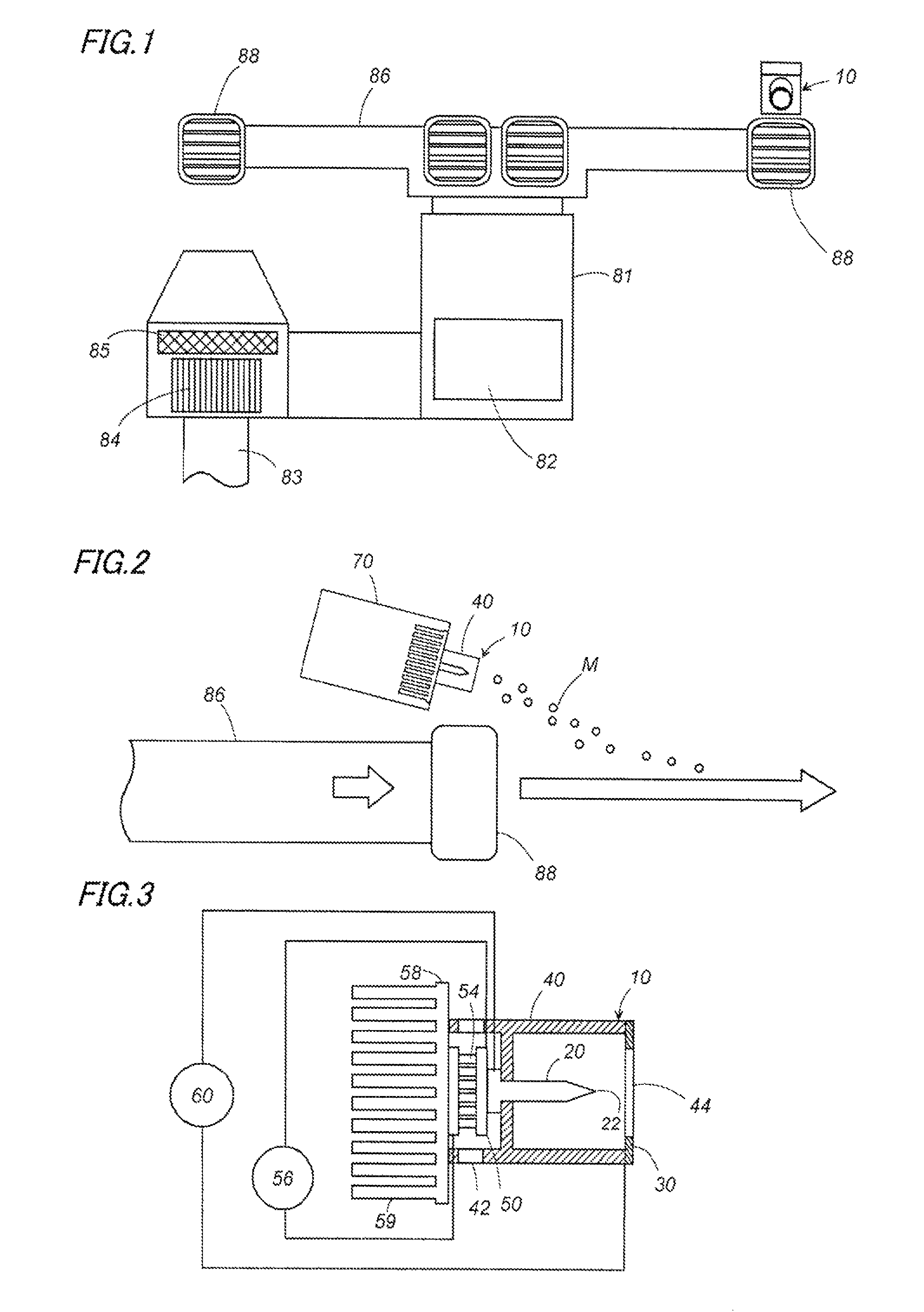Air conditioning system with electrostatically atomizing function
an air conditioning system and function technology, applied in air humidification systems, lighting and heating apparatuses, heating types, etc., can solve the problems of electrostatically atomizing units that are not able to generate electrostatically atomizing units are not able to condense the water from the conditioned air, and extremely lessen the mist of charged minute water particles
- Summary
- Abstract
- Description
- Claims
- Application Information
AI Technical Summary
Benefits of technology
Problems solved by technology
Method used
Image
Examples
Embodiment Construction
[0020]Now, a reference is made to the attached drawings to explain an air conditioning system in accordance with an embodiment of a present invention. FIG. 1 shows an example of the present invention which is incorporated to the air conditioning system for automobile use. The air conditioning system includes a heat exchanging chamber 81, an air incoming duct 83, and a ventilation duct 86. The heat exchanging chamber 81 includes a heat exchanger 82. The air incoming duct 83 is provided in order to take the air of the inside and outside of the automobile to the heat exchanger 81. The ventilation duct 86 is provided in order to send the air which is heat-exchanged at the heat exchanging chamber 81 to the inside of an automobile. The air incoming duct 83 is provided with a fan 84 for taking the air, and an air filter 85. The fan 84 creates a forced airflow. The forced airflow sends conditioned air to the inside of the automobile from air outlets 88 which are disposed at the front end of...
PUM
 Login to View More
Login to View More Abstract
Description
Claims
Application Information
 Login to View More
Login to View More - R&D
- Intellectual Property
- Life Sciences
- Materials
- Tech Scout
- Unparalleled Data Quality
- Higher Quality Content
- 60% Fewer Hallucinations
Browse by: Latest US Patents, China's latest patents, Technical Efficacy Thesaurus, Application Domain, Technology Topic, Popular Technical Reports.
© 2025 PatSnap. All rights reserved.Legal|Privacy policy|Modern Slavery Act Transparency Statement|Sitemap|About US| Contact US: help@patsnap.com



